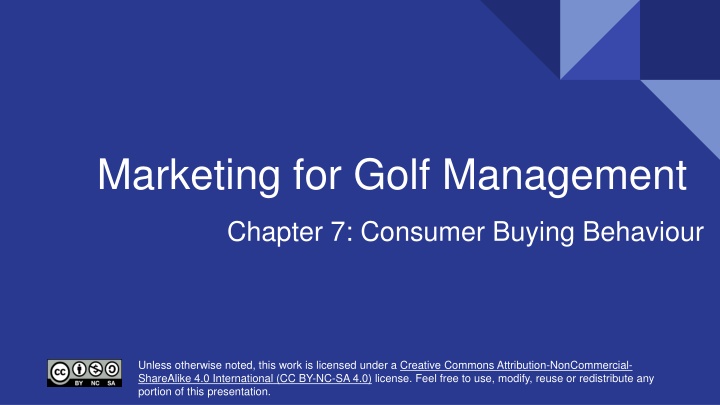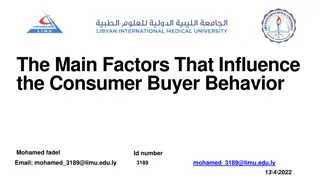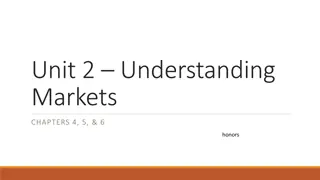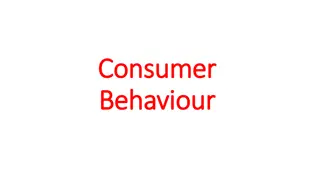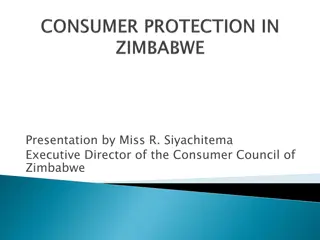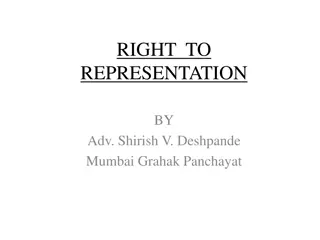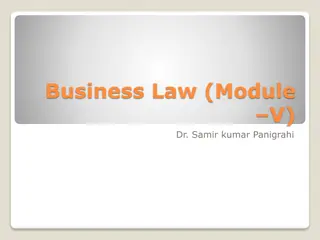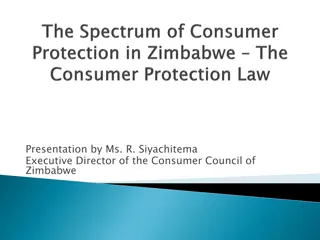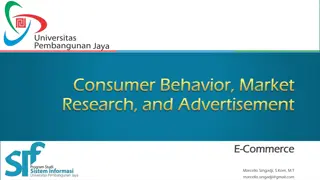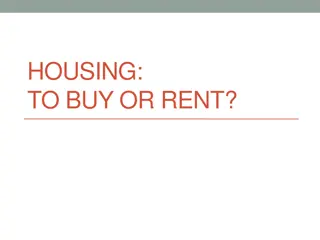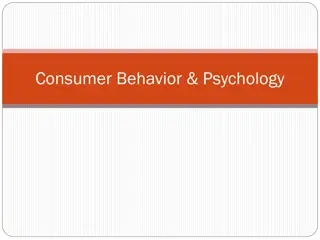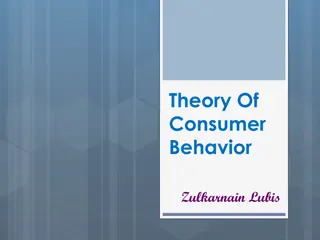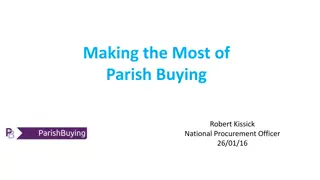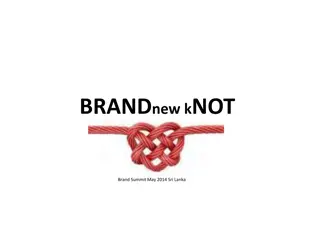Consumer Buying Behavior Factors and Decision-making Process
Consumer buying behavior is influenced by environmental, marketing, personal, and psychological factors, as well as situational aspects. This chapter explores how businesses influence consumer behavior and contrasts low-involvement and high-involvement buying decisions. Understanding these factors is crucial for marketing professionals to tailor strategies effectively.
Download Presentation

Please find below an Image/Link to download the presentation.
The content on the website is provided AS IS for your information and personal use only. It may not be sold, licensed, or shared on other websites without obtaining consent from the author.If you encounter any issues during the download, it is possible that the publisher has removed the file from their server.
You are allowed to download the files provided on this website for personal or commercial use, subject to the condition that they are used lawfully. All files are the property of their respective owners.
The content on the website is provided AS IS for your information and personal use only. It may not be sold, licensed, or shared on other websites without obtaining consent from the author.
E N D
Presentation Transcript
Marketing for Golf Management Chapter 7: Consumer Buying Behaviour Creative Commons Attribution-NonCommercial-ShareAlike 4.0 International (CC BY-NC-SA 4.0) Creative Commons Attribution-NonCommercial-ShareAlike 4.0 International (CC BY-NC-SA 4.0) Unless otherwise noted, this work is licensed under a Creative Commons Attribution-NonCommercial- ShareAlike 4.0 International (CC BY-NC-SA 4.0) license. Feel free to use, modify, reuse or redistribute any portion of this presentation.
7.0 Learning Objectives In this chapter, we will: Describe the personal and psychological factors that may influence what consumers buy and when they buy it. Explain what marketing professionals can do to influence consumers behaviour. Explain how culture, subcultures, social classes, families, and reference groups affect consumers buying behaviour. Contrast low-involvement and high-involvement buying decisions Distinguish between the stages of the buying process and identify what happens in each stage.
7.1 Factors That Influence Consumers Buying Behavior Consumer behavior is influenced by many things, including environmental and marketing factors, the situation, personal and psychological factors, family, and culture Businesses often try to influence a consumer s behavior with things they can control such as the layout of a store, music, grouping and availability of products, pricing, and advertising While some influences may be temporary, and others are long-lasting, different factors can affect how buyers behave Reason for the Purchase Situational Factors Personality and Self-Concept Social Situation Time Mood Psychological Factors: Motivation, Perception Reference Groups and Opinion Leaders Lifestyle Social Class Family
7.2 Low-Involvement Versus High-Involvement Buying Decisions and the Consumer s Decision-Making Process The level of involvement reflects how important or interested you are in consuming a product and how much information you need to decide The level of involvement in buying decisions may be considered a continuum from decisions that are fairly routine to decisions that require extensive thought and a high level of involvement Low Involvement Purchasing High-Involvement Purchasing Some low-involvement purchases are made with no planning or previous thought. These buying decisions are called impulse buying Low-involvement decisions aren t necessarily products purchased on impulse, although they can be High-involvement decisions carry a higher risk to buyers if they fail, are complex, and/or have high price tags Consumers engage in what s called extended problem solving, where they spend a lot of time comparing different aspects such as the features of the products, prices, and warranties
7.3 Stages in the Buying Process 5. 2. Search for Product Information 4. Product Choice and Purchase Postpurchase Use and Evaluation of Product 1. Need Recognition 3. Product Evaluation 6. Disposal of the Product
7.4 Psychological Factors Consumer behaviour considers the many reasons personal, situational, psychological, and social why people shop for products, buy and use them, sometimes become loyal customers, and then dispose of them Environmental factors (such as the economy and technology) and marketing actions taken to create, communicate, and deliver products and services (such as sale prices, coupons, Internet sites, and new product features) may affect consumers behaviour A consumer s situation, personal factors, and culture also influence what, when, and how he or she buys things.
7.5 Revenue Generation in the Golf Industry Club Revenue Generation Membership Options Loyalty programs Other Fees Tournaments
7.5 Golf Tournament Fundraiser Ideas for Nonprofits Mulligans Donation Appeal Hole Sponsorship Hole-in-One Contest Putting Contest Matching Gift Request Pink Ball Contest Logo Accessories
7.5 Other revenue Pro Shop revenue streams include Hard goods Corporate sales Lessons Camps Food and Beverage Banquets Weddings Events On-Course sales Online sales Branded apparel
